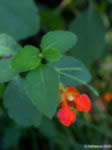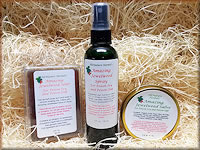POKE ROOT
Phytolacca Decandra
Other names: Phytolacca Decandra, grubroot, inkberry
Habitats: Throughout the United States, especially in the South.
Properties: Phytolacca is undoubtedly an excellent alterative stimulating metabolism and also acts as a detoxification agent. As an alterative it is used in chronic rheumatism and regular conjunctivitis. Used as an ointment it is used in psoriasis, tineacapitiss, favus, and sycosis, and other skin diseases. Specifically, Poke root is indicated in the treatment of the lymphatic system. Supporting this system is basic in most anti-cancer treatments as well as cleansing programs for a whole range of health problems. As an alterative, Poke root plays a role in helping to maintain the healthy functioning of the lymphatic system. It is especially indicated in mastitis, where it can be used internally and as a poultice. It is also an indicated remedy in the treatment of adenitis. Poke root has been indicated as a remedy in the treatment of cancer, with a success in alleviating certain forms. It has been used successfully when applied externally in cases of uterine cancer.
It has also been stated to be of undoubted value as an internal remedy in cancer of the breast. It is obvious that a great deal of success may be claimed but the actual documented proof seems to be low. Research is taking place into its physiological and biochemical function and initial results seem to indicate the Poke root has the effect of boosting the immune system through its interaction with the proliferation of T-cells.
Changes can be induced in lymphocytes by certain plant mitogens, one of the most important being phytohaemaglutinin (PHA). It is termed a polyclonal T-cell activator because it reacts with the T-cell surface nonspecifically (i.e. not as an antigen) and produces the same series of cellular events as does antigen, locking onto its specific surface receptor. Unlike the situation with antigen stimulation where only a small fraction of the cells are sensitive, PHA transforms a major portion of the T-cells. Additionally, some B-cells are affected although their response appears to be T-cell dependent. The picture is emerging that helper T-cells are preferentially stimulated by PHA> Poke weed activates both T- and B-lymphocytes.
It appears from the above discussion on the effect Poke root has on lymphocytes that its beneficial role in cancer is a legitimate one. It may be surmised as well that a number of other opportunistic infections and diseases, such as Acquired Immune Deficiency Syndrome (AIDS) may also be beneficially treated with Poke root as one of the therapeutic agents. In lymphatic disorders, Poke root is often used in conjunction with Cleavers or Blue Flag. Phytolacca is used homeopathically when the general symptoms of aching, soreness, restlessness, and prostration are present. It is pre-eminently a glandular remedy when glandular swellings are present with heat and inflammation. It has a powerful effect on Fibrous and Osseous tissues; fasciae and muscle sheets. It is also reported to act beneficially on scar tissue.
Physical characteristics: Poke root is an American perennial shrub which grows in damp woodlands, hedges, and waste places. Though the plant may grow up to 3 meters in height, the most unusual physical feature is the large root with its irregular branches. The stems are erect, round, and hairless. They branch near the top and often have a reddish tinge. The short stemmed, light green leaves are 12-20 cm long, a pointed egg shape or oval, their margins entire and wavy. The leafless, flowering stems bears an extended spike of small, greenish-white flowers. The deep purple or black berries ripen in autumn. About 1 cm. in diameter, they contain a purple juice that makes a powerful dye. Unripe berries are slightly poisonous.
Poke root's main constituents include triterpenoid saponins, alkaloid, resins, phytolacic acid, tannin, formic acid, fatty oil and sugar.
The albaloid constituents are fundamentally nitrogen containing molecules that have a marked effect on animal and human physiology in varying roles from pain killer to poison to conscious expander. Tannins have the effect of precipitating, or curdling, protein molecules producing a sort of leather coat on the surface of the tissue in question. Little documented evidence exists as to the specific beneficial role of phytolacic acid.
Physiological action: Phytolacca is broadly described as an alterative, a purgative, and an emetic. An alterative is an herb which will gradually restore the proper function of the body and increase health and vitality. They act to alter the body's processes of metabolism so that tissues can best deal with the range of functions from nutrition to elimination. Emetics are herbs that cause vomiting through irritation of the stomach or nervous system. A purgative is an herb which has the effect of causing rapid and violent diarrhea. In large doses phytolacca may produce gastro enteritis with concomitant vomiting and diarrhea. It acts as a depressant on the respiratory and cardiac centers as well as depressing the visual and auditory senses.
Preparation and dosage: Unearth roots in late autumn (October-November) and after careful cleaning, cut into slices lengthwise or crosswise. Drying may occur in either sun or shade. The root is Gray in color, hard and wrinkled. The fracture is fibrous. It is inodorous, and the taste is acrid and slightly sweet. When used as an alterative, the following prescription has been recommended: Fluid extract of Phytolacca (2 oz, Gentian (1 oz), and Dandelion (1 oz) with simple syrup to make a pint. One teaspoonful may be taken after each meal. In external application, 3 oz. of Poke root and 1 oz of tincture used in the strength of 1 tablespoon to 3 pints of tepid water for bathing the part.
Though Poke root is considered an emetic, the dosage required to bring about this effect is so close to the dangerous toxic level that its use as an emetic is not recommended. In the lower animals, convulsion and death from paralysis or respiration may be caused. Overdoses may produce considerable vomiting and purging, prostration, convulsions and death.
![]()
Copyright 1996, 1998 by Lori Herron and Alternative Nature. All Rights Reserved.
Back To Library





